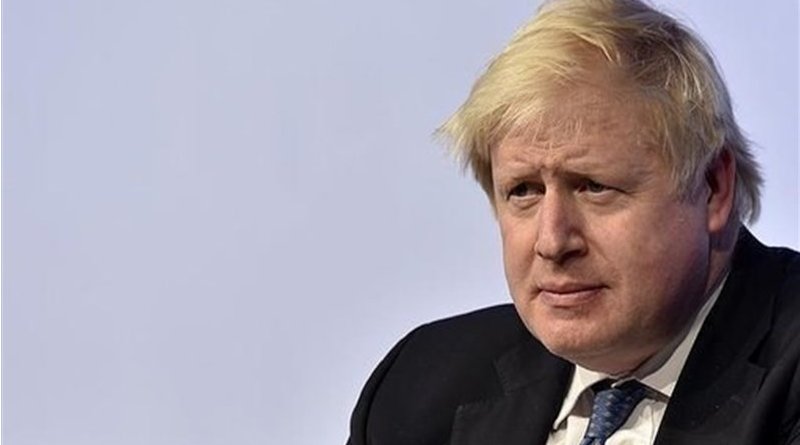Tory Majority Not A Foregone Conclusion – OpEd
By Arab News
By Andrew Hammond*
With only a week to go before the Dec. 12 UK general election, polls appear to be tightening. While the Conservatives are still forecast to emerge as the largest single party in the new Parliament, perhaps with only the party’s second overall majority since John Major’s 1992 victory, it remains plausible that a minority Labour government could yet emerge.
To be sure, the odds of a Labour overall majority are very small, but Prime Minister Boris Johnson could yet be turfed out of office if the polls narrow further and there are unprecedented levels of tactical voting, potentially producing a second successive hung Parliament. The Tories are therefore seeking to run a “safety first” campaign in the final days, seeking to avoid the mistakes made by Theresa May in 2017, when she lost a double-digit lead in the second half of that election.
The fact that the Tories have held a polling lead since the summer underlines the clear shift in the landscape since Johnson became prime minister in July. From summer 2017 to summer 2019, Labour held the ruling party to more or less level pegging. So, unless all the polls in the second half of the year are completely inaccurate, it therefore seems that the Conservatives will emerge as the largest party in the Commons for the fourth successive election.
The key remaining question in the campaign is whether the Tories secure an overall majority or not. Here there is a trend toward tightening in the polls, as evidenced by the Electoral Calculus (EC) website. EC forecasts election results using a poll of polls and has predicted, since the campaign began, that a Tory majority would emerge. However, whereas last month the projected majority was as high as 130-plus, today the forecast is for “only” 34, and was just over 10 late last week.
This underlines that victory is far from in the bag for Johnson. Factors that could yet prevent him from winning a majority, and potentially losing power to a Labour-led administration, include: The possibility of previously unseen levels of tactical voting, a new spike in youth voter turnout (record levels of under-35s registered to vote last month), a significant differential in Remain versus Leave voter turnout, and/or a decisive switch of the terrain on which the election is fought in the final week from Brexit to other issues.
To take an example of these factors, this campaign is witnessing the biggest coordinated attempt at tactical voting in UK history. Remain United is one of several organizations giving advice to Remainers on which way to vote to defeat Conservative candidates in each parliamentary constituency.
Moreover, because these various organizations sometimes give contradictory advice, a further website (Tactical.vote) has developed the equivalent of a price comparison website with a table showing what all the organizations recommend on a constituency by constituency basis.
Alongside this, an electoral pact has been agreed between the Liberal Democrats, Greens and Plaid Cymru in about 60 seats, and organizations like the People’s Vote campaign have made efforts to target the seats of about 100 pro-Brexit MPs.
Another way in which Labour could still upset the polls is if the framing of the ballot moves decisively away from Brexit to a wider prism of issues, such as the economy, the National Health Service or law and order, especially after last week’s London terrorist attack. Should this happen in a striking way, Johnson will not be able to fight on his chosen terrain of Brexit.
The reason why Labour would like the campaign to focus on this wider agenda is the backstory of significant public sector cuts that have taken place in the UK since the international financial crisis. On the law and order agenda, for instance, the party has long campaigned for the re-recruitment of about 20,000 police officer positions that have been cut back over the last decade — an agenda the Tories are getting criticized for by opposition parties after last week’s terror attack.
It is in this context that an anti-Tory administration could yet emerge next week. Given the continued suspicion of Johnson’s Brexit deal by the Democratic Unionist Party, which was May’s confidence and supply partner, it looks like the Conservatives will probably need a parliamentary majority to form a stable government. If the polls prove to be a completely unreliable guide to the election result and the Conservatives do not achieve a majority, an anti-Tory alliance between Labour, the Liberal Democrats, the Scottish National Party, Plaid Cymru and potentially the Greens could be formed to effectively lock the Conservatives out of power and push through a new EU referendum.
Taken overall, the election is still not straightforward to forecast, despite the consistent Tory polling lead. While surveys indicate that the Conservatives look most likely to emerge as the largest single party, the volatility of the electorate means that a range of outcomes — from a majority government to another hung Parliament — remain plausible, especially if tactical voting becomes a key factor.
- Andrew Hammond is an Associate at LSE IDEAS at the London School of Economics

